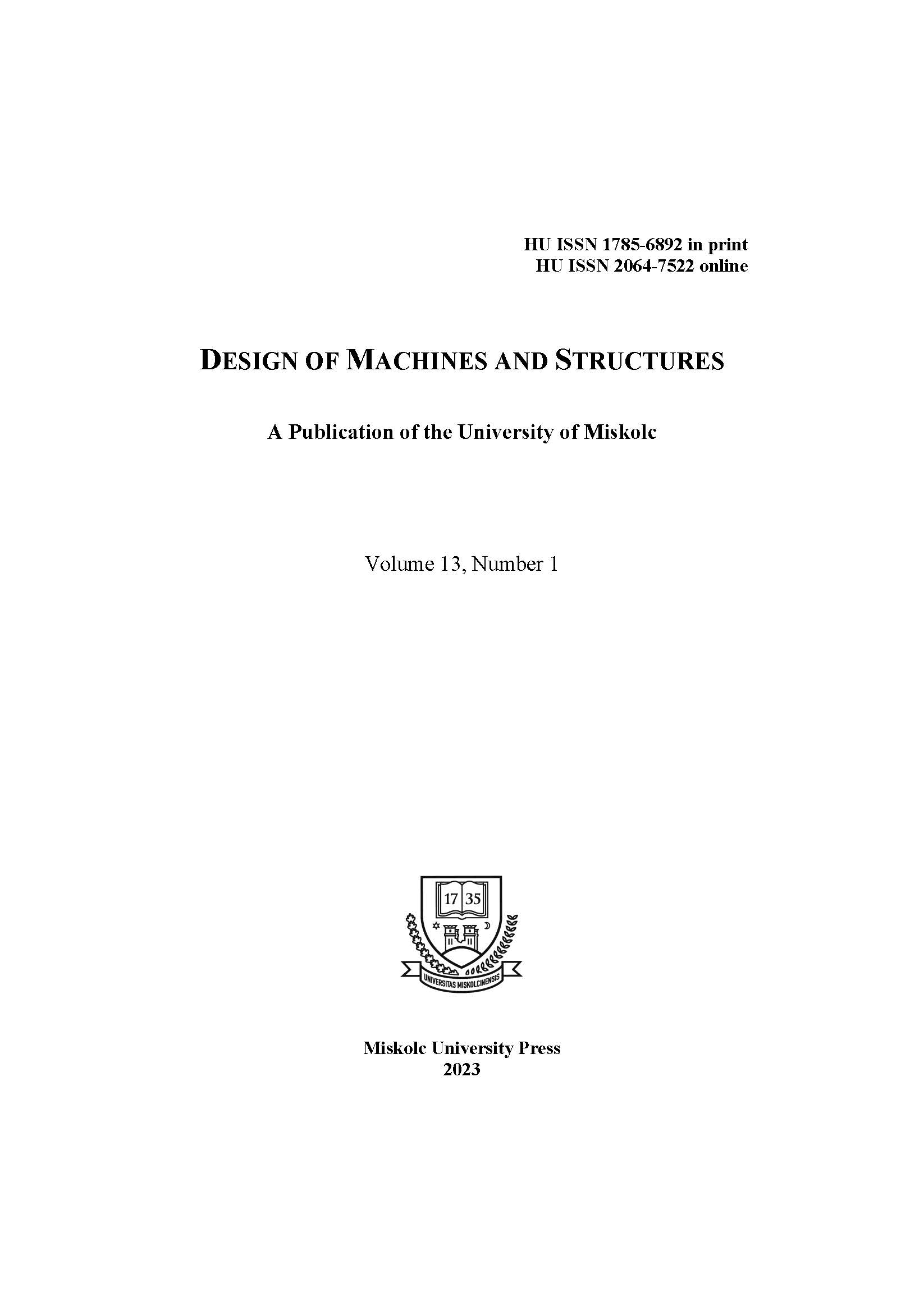Prediction of strain distribution during the plane strain tensile test based on artificial neural networks
DOI:
https://doi.org/10.32972/dms.2023.006Kulcsszavak:
FEM, ANN, RSM, Tensile test, Plan strainAbsztrakt
In this study, finite element method was used to study the effects of various notch geometries on the strain field distributions during the plane strain tensile test for cold-rolled steel (DC01). The artificial neural network approach (ANN) and the response surface meth-odology (RSM) were adopted to develop the mathematical prediction models applied in the optimization procedure. The strain state was expressed by self-defined metrics, namely, the Plane Strain State Index (PSSI) and the Homogeneity Index (HI) were predicted by changing the notch angle (X degree), notch width (d mm), and notch length (c mm). The Quadratic mathematical models obtained by the RSM, and ANN presented the evolution of PSSI, and HI based on (X, d, and c). The results show that the ANN method provides more precise results compared to those of the RSM approach.
Hivatkozások
An, Y. G., Vegter, H. & Elliott, L. (2004). A novel and simple method for the measurement of plane strain work hardening. Journal of Materials Processing Technology, 155-156, 1616-1622. https://doi.org/10.1016/j.jmatprotec.2004.04.344
Chabbi, A., Yallese, M. A., Nouioua, M., Meddour, I., Mabrouki, T. & Girardin, F. (2017). Modeling and optimization of turning process parameters during the cutting of polymer (POM C) based on RSM, ANN, and DF methods. The International Journal of Advanced Manufacturing Technology, 91, 2267-2290, https://doi.org/10.1007/s00170-016-9858-8.
Flores, P., Tuninetti, V., Gilles, G., Gonry, P., Duchêne, L., & Habraken, A. M. (2010). Accurate stress computation in plane strain tensile tests for sheet metal using experimental data. Journal of Materials Processing Technology, 210 (13), 1772-1779, https://doi.org/10.1016/j.jmatprotec.2010.06.008.
Goodwin, G. & Gorton, M. (1968). Application of strain analysis to sheet metal form-ing problems in the press shop. SAE Technical Paper. https://doi.org/10.4271/680093
International Organization for Standardization. (2008). ISO/DIS 12004-2: 2008. Metallic Materials-Sheet and Strip. Determination of Forming Limit Curves-Part 2: Deformination of Forming limit Curves in the Laboratory. International Organization for Standardization.
Keeler, S. & Backofen, W. (1964). Plastic instability in sheet stretched over rigid punches. ASM Transactions Quarterly, 11, 25-48.
Kuwabara, T. (2007). Advances in experiments on metal sheets and tubes in support of constitutive modeling and forming simulations. International Journal of Plasticity, 23 (3), 385-419. https://doi.org/10.1016/j.ijplas.2006.06.003
Marciniak, Z. & Kuczyński, K. (1967). Limit strains in the processes of stretch-forming sheet metal. International journal of mechanical sciences 9.9. International Journal of Mechanical Sciences, 9 (9), 609-620. https://doi.org/10.1016/0020-7403(67)90066-5
Wagoner, R. H. (1980). Measurement and analysis of plane-strain work hardening. Metallurgical Transactions A, 11 (1), 165-175. https://doi.org/10.1007/BF02700453

